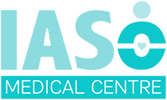Project Description
Embryo cryopreservation
The first pregnancy from cryopreserved human embryos was reported in 1983. The freezing of embryos is now a routine procedure in most modern laboratories and thousands of IVF pregnancies have been achieved following freezing – thawing cycles.
This technique offers two significant advantages:
It reduces the number of IVF cycles (provided that the number of embryos is satisfactory) with medication for ovarian stimulation. If the couple has a fairly large number of frozen embryos, then more than one embryo transfer can be performed without having to repeat the previous steps, such as the administration of stimulating medications and egg collection.
In some cases, the performance of the embryo transfer may not be possible (see Ovarian Hyper Stimulation Syndrome). In such cases where the couple is forced to cancel its IVF attempts, the preservation-freezing of embryos is a useful tool for the couple to avoid having to repeat the process.
The technique of cryopreservation of embryos takes about 2 hours and requires special materials containing an amount of cryoprotective agents. The embryos are loaded into special tubes/sequins labelled with the name and a specific code for each couple, and then transferred to the laboratory. There are several protocols for freezing cells, all designed to safeguard the integrity of cells and the organelles inside them. The cryoprotective substances help towards this direction, so the smallest possible losses occur after the thawing.
In the last few years, our laboratory uses exclusively the vitrification method to freeze eggs and embryos. This method is particularly efficient, since the survival rate of thawed embryos is 97%. In addition, pregnancy rates are similar to those in fresh embryo transfer. Also, in recent years there has been a tendency to freeze all eggs (freeze all policy) and to perform embryo transfer in subsequent cycles.
Various studies indicate that intrauterine susceptibility may be improved in subsequent cycles using frozen embryos compared to the fresh cycle with ovarian stimulation.
It is worth noting that there is no evidence that children conceived with frozen-thawed embryo transfer have abnormalities. They are born perfectly healthy. The time during which embryos could theoretically remain frozen is unlimited. The Law however provides that the maximum period of 5 years can be extended by another 5 years, following a written request signed by both partners at the cryopreservation bank.
OPENING HOURS
| Monday – Friday | 8:00 – 13:00 16:00 – 19:00 |
| Saturday | 8:00 – 12:00 |
| Sunday | CLOSED |

